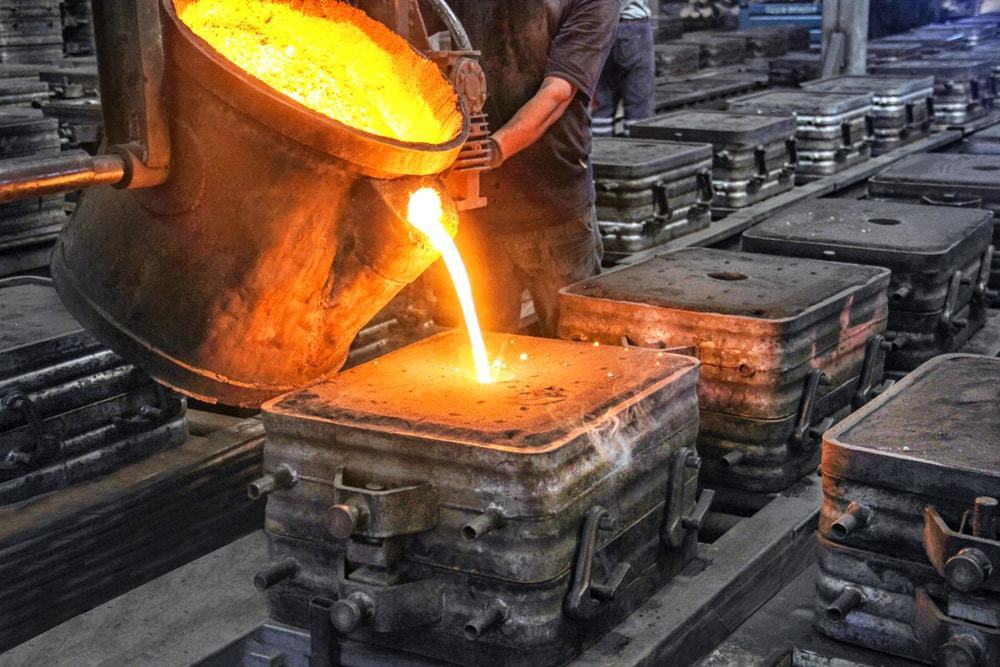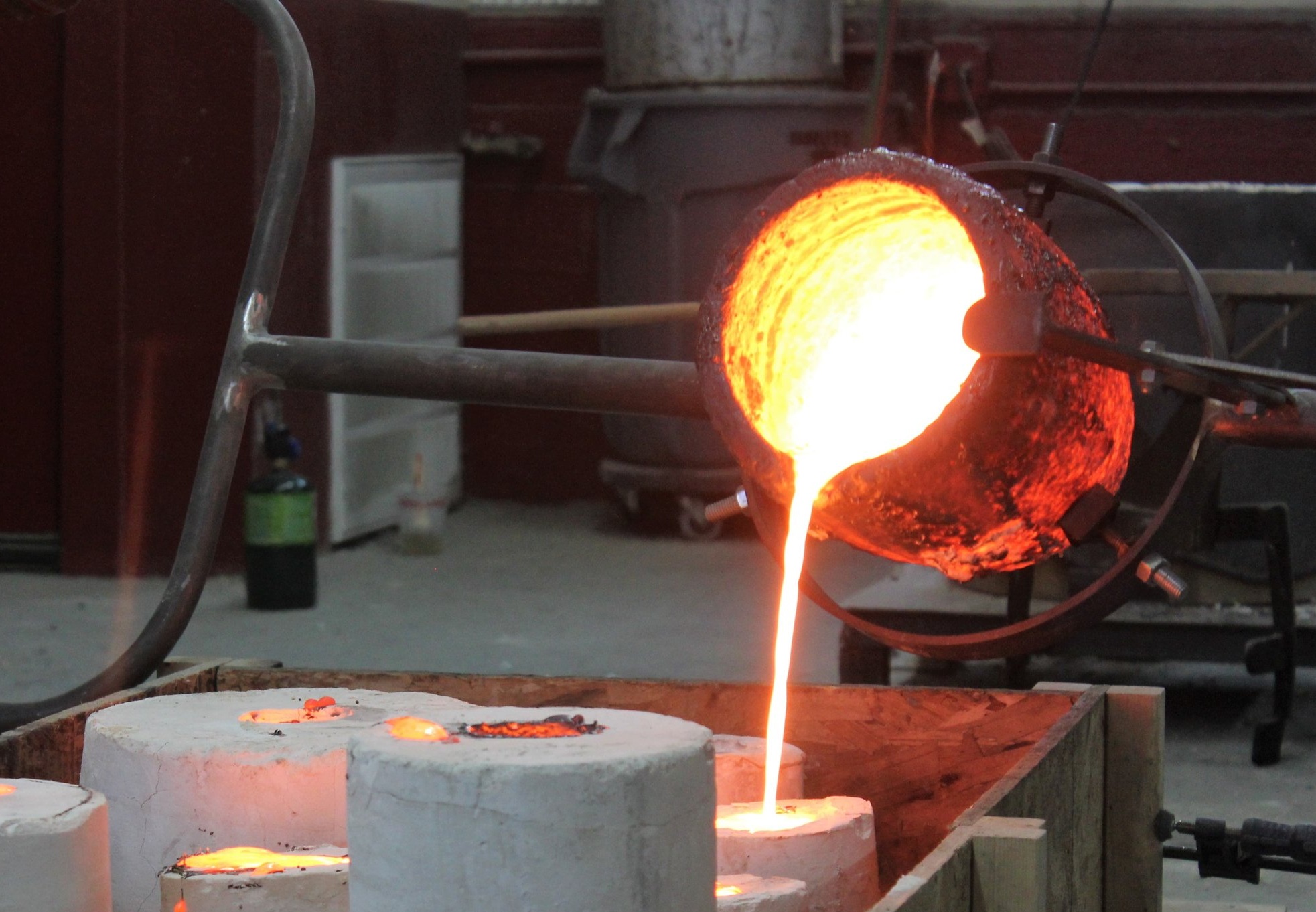Wisconsin Aluminum Foundry and its commitment to excellence in metal production
Wiki Article
Understanding the Metal Castings Refine: A Comprehensive Guide for Beginners
The Metal Casting procedure is a basic strategy in producing that transforms molten metal into solid types. Newbies should understand the different approaches included, such as sand casting and pass away spreading. Understanding the products, layout concepts, and safety and security steps is equally essential. Each aspect plays a vital role in accomplishing effective outcomes. As one navigates these intricacies, the question of just how to optimize each action for boosted results ends up being increasingly significant.The Fundamentals of Steel Casting
Metal Casting has actually advanced over centuries, its basic principles continue to be important and constant to the production procedure. At its core, Metal Casting includes the improvement of liquified steel right into strong objects with various strategies. The procedure starts with the development of a mold, which specifies the form of the last product. When the mold is prepared, steel is warmed to its melting factor and poured right into the cavity. After cooling down, the steel solidifies, taking the form of the mold and mildew.There are several casting approaches, consisting of sand spreading, financial investment spreading, and pass away spreading, each with one-of-a-kind benefits and applications. The choice of method relies on aspects such as production volume, material type, and preferred accuracy. When cast, the last product may undertake extra procedures like machining or surface area treatment to accomplish the required surface and specifications. Recognizing these basics is vital for any individual thinking about the area of Metal Casting.

Understanding Materials Made Use Of in Steel Casting
Products play a vital function in the Metal Casting procedure, influencing the end product's homes and performance. Various metals are made use of, consisting of aluminum, steel, bronze, and iron, each offering unique features suited for particular applications. Light weight aluminum is corrosion-resistant and lightweight, making it optimal for auto parts. Iron, particularly cast iron, is favored for its outstanding wear resistance and longevity. Steel provides high toughness and flexibility, usually made use of in heavy machinery parts. Bronze, recognized for its rust resistance and machinability, is frequently utilized in aquatic applications.In addition to the metals, numerous casting products, such as sand, plaster, and ceramic, are utilized to create mold and mildews. Sand spreading, one of the most common technique, uses silica sand due to its thermal security and ability to form elaborate forms. Plaster and ceramic molds provide better details but might require more complicated procedures. The option of products straight influences the performance, expense, and top quality of the spreading operation.
The Style Process: From Idea to Plan
The design process in Metal Casting begins with the first principle growth, where ideas are produced and evaluated. This is complied with by the application of CAD modeling methods, permitting exact visualizations of the design. Lastly, the plan finalization actions guarantee that all specifications are properly recorded for production.Initial Principle Growth
First concept advancement marks a critical stage in the Metal Casting process, where concepts transform into tangible designs. During this stage, designers work together with designers and stakeholders to brainstorm and refine preliminary concepts. They take into consideration elements such as capability, appearances, and manufacturability, ensuring that the design satisfies the needed specs and performance standards. Illustrations and rough drafts are developed to visualize the concepts, permitting preliminary evaluations of expediency and cost-effectiveness. This stage additionally includes recognizing products and potential casting methods that line up with the style objectives. Eventually, first principle growth prepares for a complete blueprint, leading the succeeding stages of the casting procedure and making sure a successful shift from principle to truth.CAD Modeling Techniques
Transforming concepts into exact layouts, CAD modeling strategies play a pivotal role in the Metal Casting process. These strategies make use of innovative software application to develop detailed three-dimensional designs that properly mirror the designated product. By employing tools such as parametric modeling, solid modeling, and surface modeling, developers can adjust measurements and forms with ease. CAD systems additionally help with simulation and analysis, permitting the recognition of potential flaws before production starts. This aggressive method reduces product waste and maximizes the design for manufacturability. In addition, CAD models can be quickly changed, making it possible for fast iterations based upon comments. Fundamentally, CAD modeling functions as the foundation of the layout procedure, connecting the void between initial principles and the ultimate production-ready layouts.Plan Completion Tips
Following the development of detailed CAD models, the next phase involves blueprint finalization, which is essential in equating digital layouts into actionable prepare for production. This process begins with reviewing the CAD versions for accuracy and compliance with requirements. As soon as confirmed, the measurements, resistances, and material specs are diligently described to guarantee clarity. Incorporating notes and notes helps communicate necessary information regarding spreading procedures, surface area coatings, and assembly needs. The finalized blueprint undergoes a rigorous authorization process, frequently entailing collaboration with engineers and production groups to resolve any type of prospective issues. Alterations are made and authorizations obtained, the plan is officially launched, serving as the foundational file for the subsequent stages of Metal Casting, including pattern making and mold design.The Steel Casting Methods Discussed

Metal Casting methods encompass a selection of methods used to shape molten steel right into preferred types. These strategies vary according to the sort of material, intricacy of the design, and manufacturing quantity. Sand casting is just one of the most usual techniques, including the development of a mold from sand to hold the liquified steel. Financial investment spreading, or lost-wax casting, enables detailed layouts by using a wax pattern that is disappeared. Pass away casting utilizes high-pressure injection of liquified steel into a mold, suitable for automation. Other methods include long-term mold casting, which uses multiple-use mold and mildews, and centrifugal casting, where rotational pressures aid in filling up the mold. Each strategy has its benefits and published here applications, making it important for makers to pick the appropriate technique based on their details requirements and demands. Comprehending these strategies is necessary for anyone associated with the Metal Casting process.
Finishing Procedures: Enhancing Your Casted Product

Finishing procedures play a necessary go role in improving the quality and look of casted products. Numerous surface therapy methods, such as polishing and layer, are utilized to improve durability and appearances. In addition, quality evaluation methods assure that the end product satisfies defined criteria and efficiency demands.
Surface Treatment Strategies
A selection of surface therapy strategies play an important duty in improving the quality and long life of casted products. These methods consist of approaches such as shot blasting, polishing, and layer. Shot blasting efficiently eliminates surface area blemishes, enhancing the practical and aesthetic features of the casting. Sprucing up provides a smooth finish, which is specifically vital for decorative applications and components requiring very little rubbing. Coating techniques, such as electroplating or powder coating, deal additional security versus corrosion and wear, making sure toughness. Additionally, surface therapies can boost bond for succeeding processes, such as paint or bonding. By employing these approaches, makers can accomplish premium surface area quality, which is important for the performance and life expectancy of Metal Casting in numerous applications.Quality Evaluation Techniques
Reliable high quality inspection techniques are essential for ensuring the honesty and efficiency of casted products after the finishing processes. Various methods are employed to examine the quality of Metal Casting, consisting of aesthetic assessment, dimensional checks, and non-destructive screening (NDT) Visual assessment enables for the identification of surface issues, while dimensional checks ensure that items satisfy defined tolerances. NDT methods, such as ultrasonic screening and radiographic assessment, provide deeper understandings right into interior honesty without harming the spreadings. Furthermore, mechanical testing, such as tensile and firmness examinations, reviews product homes - Aluminum Castings. By using a mix of these techniques, suppliers can boost product quality and dependability, ultimately resulting in better client contentment and minimized production expensesSecurity Considerations in Metal Casting
While the Metal Casting procedure provides many benefits, it likewise presents a variety of security hazards that must be very carefully taken care of. Workers in casting facilities are subjected to heats, molten metals, and harmful materials, which can cause extreme injuries if correct precautions are not taken. Personal protective tools (PPE) such as heat-resistant gloves, encounter guards, and protective clothes is crucial to minimize risks.Furthermore, the presence of fumes and dirt demands proper air flow systems to guarantee air top quality - Aluminum Foundry. Routine training on safety and security methods is important for all workers to recognize prospective dangers and react properly. Emergency situation treatments ought to be developed, including fire safety procedures and first aid accessibility. Upkeep of equipment and appropriate handling of materials further add to a more secure working environment. By prioritizing these safety and security factors to consider, Metal Casting procedures can secure their workforce and maintain reliable manufacturing processes
Frequently Asked Inquiries
What Are the Ecological Impacts of Metal Casting?
Metal Casting can result in ecological influences such as air and water contamination, resource exhaustion, and power intake. Additionally, improper waste management and exhausts from read more foundries add to eco-friendly disturbances and health risks for nearby communities.How Do I Select the Right Metal for Spreading?
To pick the appropriate steel for spreading, one need to take into consideration variables such as mechanical properties, corrosion resistance, thermal conductivity, and cost. Examining the designated application and environmental conditions is vital for perfect choice.What Are the Common Defects in Metal Casting?
Usual defects in Metal Casting include porosity, contraction, sand incorporation, and misruns. These concerns often develop from incorrect product option, insufficient style, or imperfections in the spreading process, affecting the last product's quality and efficiency.
Just How Can I Boost My Metal Casting Abilities?
To improve Metal Casting abilities, one should exercise consistently, research spreading methods, examine previous tasks for flaws, seek responses from experienced wheels, and continually try out different materials and methods to improve efficiency and understanding.What Is the Price of Beginning a Metal Casting Business?
Beginning a steel casting service typically calls for an initial investment of $5,000 to $50,000, relying on equipment, products, and center costs. Elements like place and range can substantially affect overall startup costs.The Metal Casting process is an essential technique in making that changes molten metal into solid types. Beginners must grasp the various methods included, such as sand casting and die casting. There are numerous casting methods, including sand casting, investment spreading, and pass away spreading, each with special advantages and applications. Financial investment casting, or lost-wax casting, permits for complex styles by using a wax pattern that is thawed away. Other methods include irreversible mold casting, which makes use of recyclable molds, and centrifugal casting, where rotational forces help in filling up the mold and mildew.
Report this wiki page